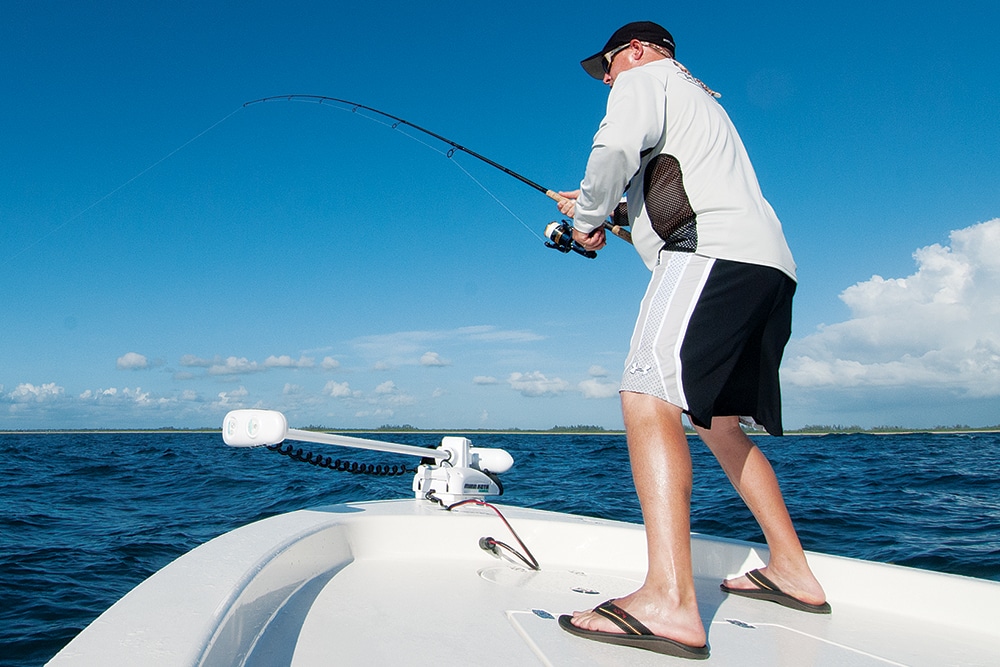
The lexicon used to describe where anglers fish is confusing, even frustrating. “Inshore” or “coastal” often describes fishing in estuarine waters, at least in my stomping grounds, where fishermen target species like speckled trout, redfish, and flounder in rivers, creeks, and bays.
“Offshore” fishing begins once you leave the inlet and make a run for blue water. However, offshore fishing is not dependent on the length of the run to the fishing grounds or how deep the water is — offshore fishing might start just a couple of miles (at ports such as South Florida, Panama or the Bahamas) or hours off your coast.
Even with those broad designations, the fish don’t always cooperate. There are no fences in the salt, so inshore species often leave inside waters for the Gulf and Atlantic. Usually these movements coincide with spawning rituals, an exciting time of year to target oversize specimens, at least for catch-and-release fishermen.
So the next time you want to catch a trophy species, consider heading out of brackish areas and into open waters. Think differently on your next trip — consider it a role reversal — and you could score the “inshore” fish of a lifetime offshore.
Catching Snook in High Water
South Florida fishermen regularly target snook up rivers, on mangrove-lined flats, and in passes and inlets. But not many know that offshore wrecks attract snook each summer, starting as early as late spring.
“My favorite spots average about 5 miles offshore, in anywhere from 20 to 60 feet of water,” says Capt. Glyn Austin, of Sebastian, Florida. “Most people don’t really target them because it’s all catch-and-release fishing June through August. Most people want kingfish or cobia, something they can take home.” Austin says all the fish are all longer than the 32-inch slot maximum, so the oversize linesiders can’t be kept no matter if the season is open or closed.
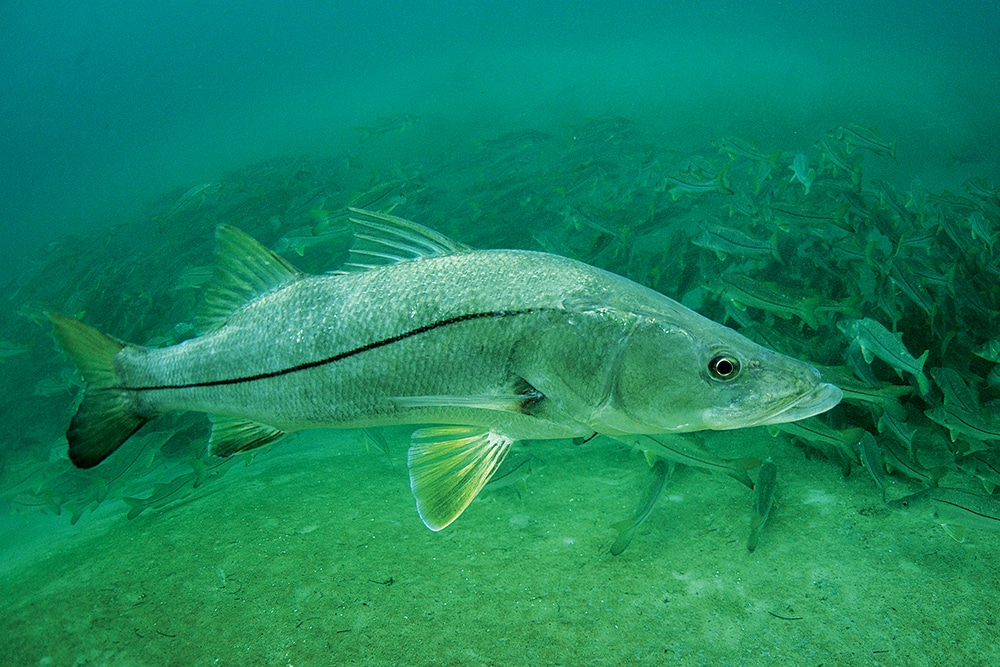
“Typically I use the same tackle at the wrecks as at the inlets,” says Austin, “a 7- to 8-foot rod, 20- to 40-pound braid, and baits like threadfin herring and pogies.”
Austin fishes mostly from Port Canaveral to Sebastian, but snook exhibit the same behavior farther south on both Florida coasts around barges and reefs.
“The snook are definitely attracted to structure and hang on the bottom,” says Austin. “We often catch giant jack crevalle, goliath grouper, cobia, redfish, black drum and flounder out there, along with the snook. That’s plenty of species that we see both inshore and offshore.”
Deep-Down Flounder
Heading north along the Atlantic Coast, a different inshore species replaces snook around offshore structure. And this species is available from Florida to the mid-Atlantic states: flounder.
“In spring and especially fall, flounder are available in 60 to 85 feet of water out of St. Augustine and Mayport inlets, about 6 to 15 miles offshore,” says Capt. Stephen Szczepanik, of Mayport, Florida. “Those offshore fish just taste so much better than the inshore fish; it must be something about the sandy bottom they’re sitting on.”
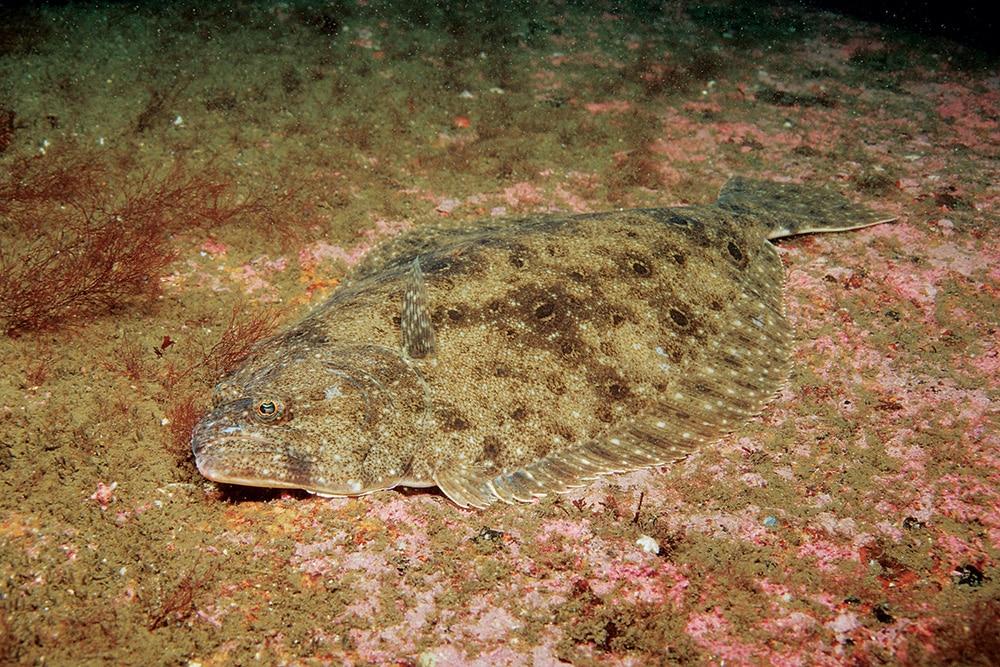
Szczepanik has learned over the years that flounder are more likely to hang near metal structure, such as barges, instead of concrete rubble. The flounder group together in masses around the base, likely preparing or concluding their spawn. Still, Szczepanik admits that most of the flounder he catches and fillets don’t have roe.
“Offshore, an average fish is at least 22 inches and 3 pounds,” he says, “but 8-pound fish are also pretty common. Inshore, an 8-pound flatfish is an uncommon catch.”
One top tactic is vertically jigging a live mullet with a 1-ounce jig, making sure the line stays tight. He specifically shies away from stinky artificials because they attract undersize black sea bass and beeliners (vermilion snapper). Szczepanik prefers to use 20-pound-braid main line for its toughness and ability to cut through the water. Once you hook into a couple of flounder, chances are there are plenty more in the same spot.
“The best days are when it’s flat calm, and you can use a trolling motor to stay on top of the spot,” says Szczepanik. “Mark the structure with your finder, and then throw out a jug to mark the wreck.”
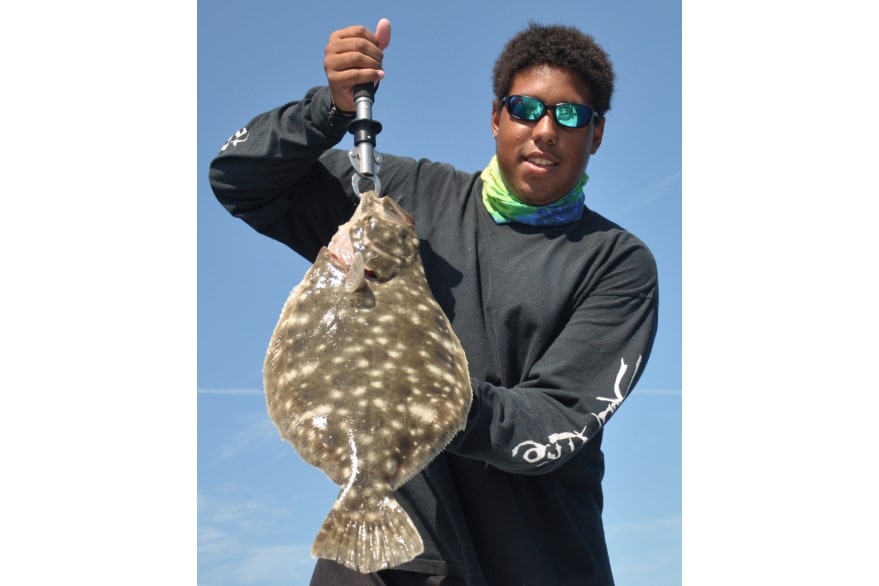
Curious Case of Stripers
What happens when the biggest inshore fish are off-limits offshore? Chesapeake Bay captains deal with this every winter when targeting monster striped bass.
“The past two years, cold winters pushed the bait off the beaches 10 to 15 miles, taking the stripers with them,” says Capt. Jake Hiles, of Virginia Beach. “But because striped bass are designated game fish in federal waters, fishermen can’t target striped bass, even for catch-and-release, in the Exclusive Economic Zone (more than 3 nautical miles offshore).”
The ocean season for migratory stripers ranges from about mid-December to February. Late February into March, the migratory striped bass head up Chesapeake Bay to spawn in the rivers, says Andrew Turner, a fisheries biologist with NOAA’s Chesapeake Bay office. Late May and June see the fish head north of New York to Maine to summer in the cool waters, usually within 3 miles of shore. Over the past couple of seasons, many Virginia anglers have not seen good numbers of stripers like they used to, whether that’s because of migration changes or increased fishing pressure.
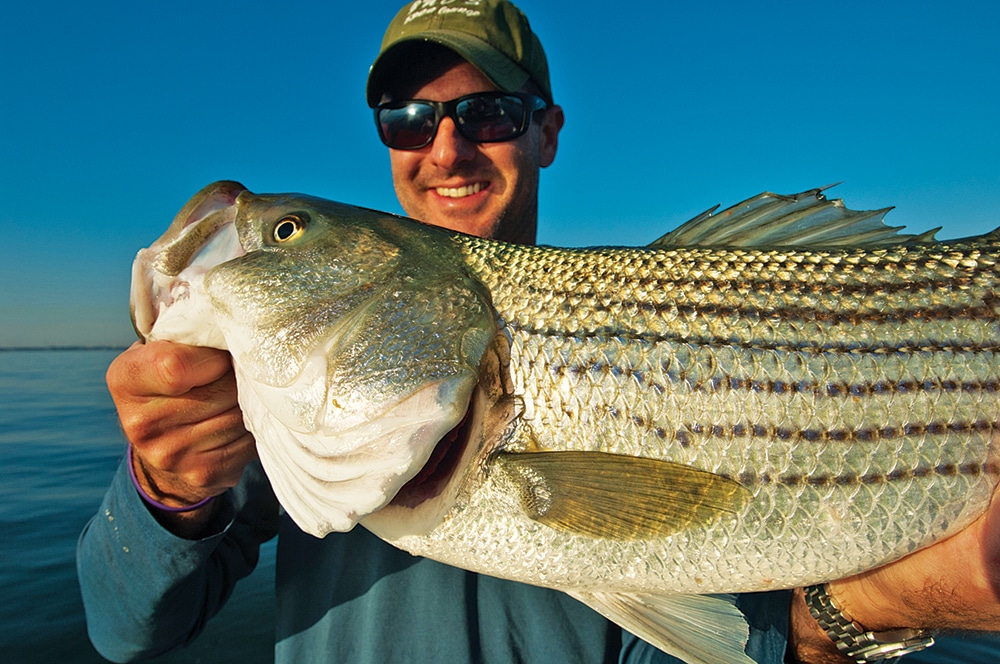
Role Reversals
When warm winters bring baitfish schools and mature stripers within a mile or two of the beach, Capt. Herb Gordon fishes the eastern shore of Virginia.
“You have to find the birds to find the fish,” says Gordon. “Finding birds is easy with the use of a good radar, one at least 6 kW. The bottom machine helps, but it’s not as dependable as birds. Some areas with structure always hold bait, which in turn, hold fish.”
Gordon usually trolls just four rods, while some of the other charter boats troll as many as 20. “On our rigs, we use double parachutes, 9 ounces each, with rubber 9-inch shads,” he says. “Our lines are staggered to fish different depths, and we also vary our trolling speeds.”
For anglers fishing in and around the mouth of the Chesapeake, it’s a matter of finding rockfish before they head too far offshore.








